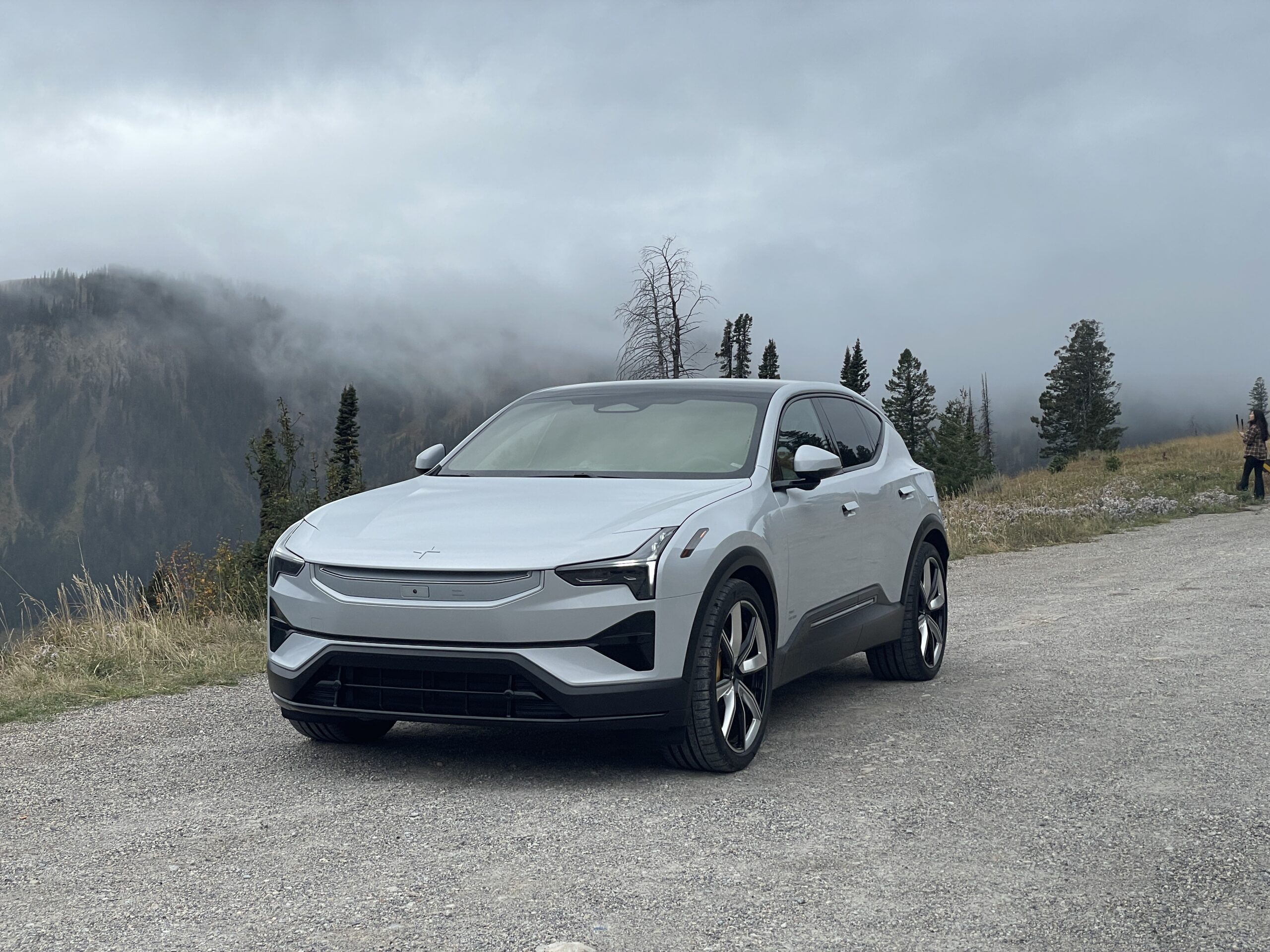Sign up for daily news updates from CleanTechnica on email. Or follow us on Google News!
Transport and Environment reports that in July, the owner of a Tesla Cybertruck based in the Czech Republic announced that national authorities registered his vehicle for use on public roads. An online post suggested the Czech Republic’s system of “individual vehicle approval” was used to register this particular Cybertruck.
Tesla’s manual for the Cybertruck lists its maximum weight as 4 tons, with some small differences between variants. However, a group of NGOs is questioning the legality of the registration, claiming the owner-importer of this Cybertruck, or the technical testing center working on his behalf, declared its maximum weight as 3.5 tons in documentation submitted to Czech registration authorities. That allowed the vehicle to be classified as an N1 light duty vehicle under EU law.
In a letter to the Czech ministry, the NGOs point to a legal basis for allowing the maximum weight of the vehicle — as declared by the manufacturer and imprinted on the Vehicle Identification Number plate — to be disregarded in favor of a figure approximately half a ton less, thereby conveniently matching the EU weight limit for light duty vehicles.
EU law also requires the carrying capacity of an N1 commercial goods vehicle to be at least as high as its person-carrying capacity, measured by weight. That test is clearly intended to safeguard Europe from the oversized pickup trucks now being imported more frequently into the EU and bringing danger to its streets. “Based on data published by Tesla, the Cybertruck appears not to pass this test,” the letter says.
The letter calls on the Czech government to review the registration, which could, if not addressed, represent the beginning of the mass import of Cybertrucks into Europe. The objectors say the Cybertruck is too big and sharp for European roads. Since its release last year, there had been confusion about whether the Cybertruck could be legally driven in Europe, due to strict road safety rules that ban sharp edges and require speed limiters on vehicles that weigh more than 3.5 tons when fully loaded. The Tesla owners manual lists the Cybertruck as having a gross vehicle weight of 4 tons — more than double the weight of a Ford Focus.
“Very oversized pickup trucks [are] now being increasingly imported and bringing danger to our streets,” said James Nix of Transport & Environment, which co-signed the letter. Europe’s car market has followed the North American shift to big and heavy sports utility vehicles, but safety and pollution regulations have stunted the growth of the most dangerous pickup trucks, according to a report by The Guardian.
Cybertruck Enters Via The Back Door
The issue is a back door included in the EU regulations that allows an imported car to be registered on an “individual vehicle approval” basis which subjects them to less scrutiny than the “type approval” that most cars undergo. Approval authorities in member states, which are responsible for checking vehicles before they reach the market, have some room to deviate from EU rules in individual cases if they impose alternative requirements. The question now is whether the “individual approval basis” used to register this particular Cybertruck was legally correct.
The issue comes down to whether the vehicle weight is measured without passengers or cargo, in which case the Cybertruck tips the scales at 3.025 tons. But add a driver, a few passengers, and a modicum of cargo and the weight can quickly exceed the 3.5 ton limit for N1 vehicles in Europe.
The Czech transport ministry said all vehicles in the N1 category have weight ratios calculated from formulas contained in EU regulation since 2018. But the vehicle data it provided shows the Cybertruck does not satisfy the formulas when carrying four passengers. Norton Slovak, the co-founder of Cybertruck.cz, the company that owns the vehicle, said he was aware of the discrepancy between the vehicle weight and the regulation but that the “calculations may not fully reflect how these regulations are applied or interpreted by Czech authorities.”
The Czech transport ministry said it did not see the discrepancy as a problem because the registration was “individual approval of a vehicle from the national scope only on the territory of the Czech Republic” and not a “type approval” for the EU free market. However, the truck, which is rented out for advertising campaigns, has already been driven to other EU member states such as Slovakia. It is not clear if vehicles registered using the “individual approval” loophole can be driven in other EU member nations.
The Cybertruck & Pedestrian Safety
“Cybertrucks present acute dangers and don’t meet European standards,” said Nix. “To protect other road users, we’ve asked the minister to suspend the Cybertruck from public streets” until it has been reviewed. Big and heavy cars are more likely than small ones to kill people in a collision. A study published in March found a 10 cm increase in the front end height of a vehicle led to a 22% increase in pedestrian fatality risk, most strongly affecting the survival chances of women, children, and older people.
Slovak said the Cybertruck was less dangerous on this metric than many other SUVs on European roads, which may be lighter but have higher front ends. He suggested the EU could revise its weight rules for electric vehicles, which are less polluting than combustion engine cars but have heavy batteries that increase their bulk. “Given the growing need to accommodate modern, sustainable vehicle designs, this revision could ensure that vehicles like the Cybertruck comply with safety and environmental standards while still fitting into the appropriate classifications.”
In the letter, the transport campaigners said there was no lawful way to register a Cybertruck in the EU because it “seriously conflicts” with basic European road safety norms. They questioned the adequacy of the Cybertruck’s crumple zones, the vehicle’s ability to accelerate extremely quickly, and the risks to children from poor direct vision. The European Commission said it would need more information on the national requirements and safety measures to assess the registration. It plans to discuss the topic with approval authorities from member states at an upcoming meeting on enforcement.
The Takeaway
So what is going on here? Is this a blatant attempt to thwart EU regulations, or are the owner’s comments valid about how the Cybertruck is different from other pickup trucks because it has a battery? One could argue that when the EU regulations were crafted in 2018, they did not contemplate vehicles like the Cybertruck. In the employee lounge at CleanTechnica, where all the chairs are upholstered in fine Corinthian leather, we discussed this and decided if the VIN plate lists the gross weight of the vehicle as just under 4 tons, that should be the controlling factor. Arguing that the manufacturer’s specs can be ignored in individual cases seems a stretch to us, as does forcing other countries to allow the Cybertruck on their own roads.
It is well known that some in Europe are distressed by the way the size of vehicles is increasing as buyers opt for more SUVs. Earlier this year, Paris tripled the cost of parking an SUV in an effort to discourage people from driving them into the city. There is no question that the front end of a Cybertruck is hazardous to the health of any pedestrians in its path, but is it any more dangerous that the prow of any other monsters like the Cadillac Escalade or Ford F-150? How much of this is political bias against Elon Musk, who goes out of his way to alienate people by waving his piles of cash in their faces and daring them to stop him?
Ultimately it will be another headache for the European Commission to sort out. Typically, that means no one will be happy with the solution, which in the normal course of business could be years away.

Have a tip for CleanTechnica? Want to advertise? Want to suggest a guest for our CleanTech Talk podcast? Contact us here.
Latest CleanTechnica.TV Videos
CleanTechnica uses affiliate links. See our policy here.
CleanTechnica’s Comment Policy





